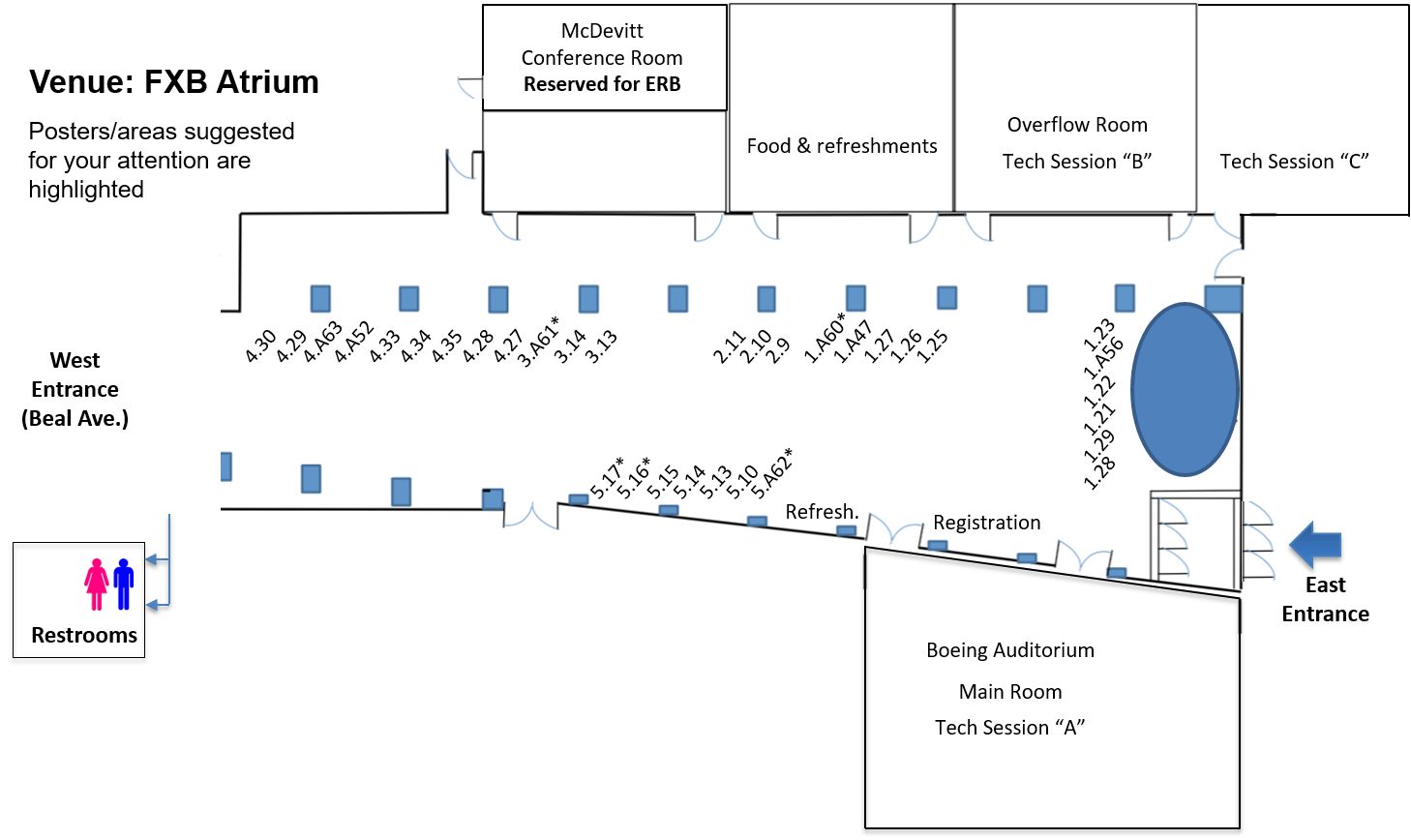Poster Session & Floorplan

Thrust Area 1
1.21 Physics-Based Multiscale Continuum-Discrete Deformable Terrain Model for Off-Road Mobility Simulation
1.22 Fast Numerical Algorithms and High Performance Computing for High Fidelity Terramechanics Simulations
1.23 Physics Enhanced AI
1.25 A Decision-Based Mobility Model for Semi and Fully Autonomous Vehicles
1.26 Adversarially Robust Coordination for Autonomous Multi-Vehicle Systems
1.27 Mutually-Adaptive Shared Control between Human Operators and Autonomy in Ground Vehicles
1.28 Robust Terrain Detection and Path Planning for Autonomous Ground Vehicles in Unstructured Environments
1.29 Remote Sensing Based Terrain Strength Characterization for the Next Generation NATO Reference Mobility Model Development
1.A47 Trust-based Control & Scheduling for Multiple UGVs
1.A56 A Novel Active Learning Approach for Constructing Mobility Maps
1.A60 Autonomous Vehicle Path Planning with Uncertain Data
Thrust Area 2
2.9 Modeling Bi-directional Trust in Semi-Autonomy for Improved System Performance
2.10 Adaptive Haptic Shared Control for Remote Steering of a UGV
2.11 Manned-Unmanned Teaming for Reconnaissance in Adversarial Environments
Thrust Area 3
3.13 Systems Approach to Wheel and Pad Metamaterial Design
3.14 Fatigue resistance optimization of armored vehicle structures using weld master S-N curve
3.A61 Ultrasonic Sensors for Autonomous Vehicles
Thrust Area 4
4.27 Heat Rejection Using Advanced Materials – Passive and Active Cooling Strategies
4.28 Computationally‐efficient AC Resistance Model for Stator Winding with Solid Conductors for Electric Machines
4.29 Ignition Studies for Kinetic Mechanism Development and Validation
4.30 Boundary Conditions for Predictive Combustion Simulation
4.33 Advanced Battery Diagnostics: Decoding the Electrode Swelling
4.34 Computational Discovery of Materials for Energy Storage: High Throughput Screening and Machine Learning
4.35 Multi-Physics Reduced-Order-Models (ROMs) of Electro-Magnetic-Structural (EMS) Dynamics
4.A52 Optimization of Scalable Military Fuel Cell Hybrid Vehicles
4.A63 Understanding the Efficiency Limit of Hydrogen Fuel Generation Using Nitride Semiconductors
Thrust Area 5
5.10 Data-Driven Reliability of Repairable Systems Using an Effective Age Approach with a Limited Failure Population
5.13 AI-Based Dynamics of Adaptable Fleets of Autonomous Vehicles
5.14 Parameter Synthesis and Requirement Analysis for Cyber-physical Control System Design
5.15 Autonomously Learning Mobility Limits
5.16 Energy Prediction in Off-Road Environments with Heterogeneous Ground Robots
5.17 Communication-Constrained Multi-Robot Coordination
5.A62 Probability of Mobility for Mission Planning of Autonomous Ground Vehicles at “High Stress” Environments

